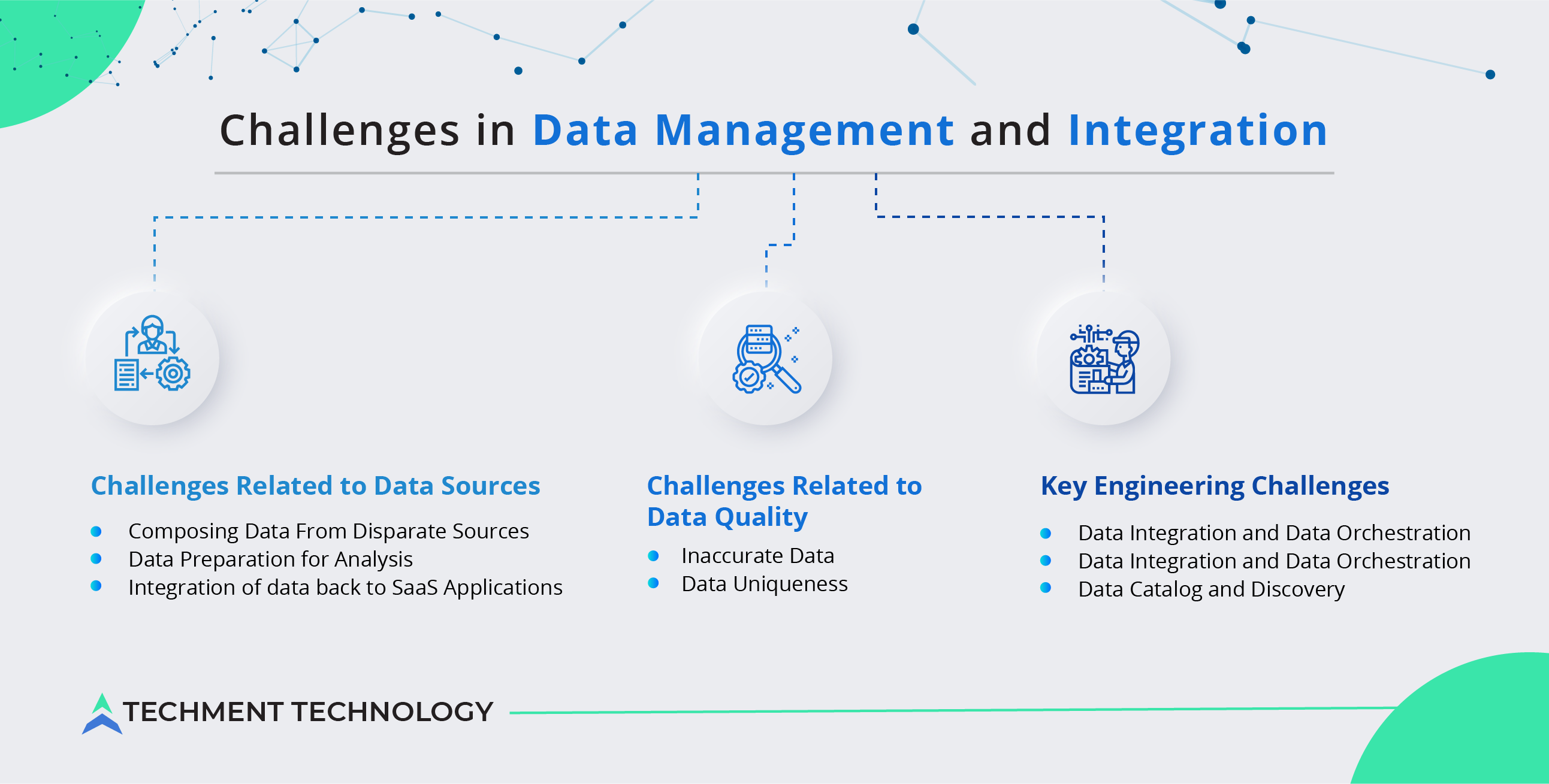Data Needs to Treated as Strategic Asset for Better Management
Data analytics is no more of competitive advantage but is a pressing need for core businesses to make real-time decisions and make changes in the economic landscape. Traditionally, companies have focused on collecting and visualizing data for the next phase of the data analytics journey to transform and redefine their organizational goals. Like a product development team, data teams will adopt practices like storing, moving, managing, and visualizing data which comes as a challenge when companies want to centralize it. Not only for companies working in data engineering, but for every company data is a new product, as they try to reinvigorate, try to improve retention, and deliver better results.
For many companies, the explosion of data is net positive and they are trying to adopt new data stacks in an earlier phase of their lifecycle with affordable and easy tools which include cloud data warehouse, BI tools, etc. Stepping into 2022 comes as a challenge in tooling for data processing, data migration, data integration, and movement especially when organizations are betting on trends like data observability, data governance and auditing, data discovery and visibility. In a survey of 150 enterprise tech leaders done by Matillion, data maintenance and migration costs around $43.5 million per year, hence enterprises struggle to turn data into useful insight.
Once organizations are set to look at data as a strategic asset and reduce the time taken for manual processes of data management and architecture, they would be able to deliver firepower data projects. To come to an optimal data-driven state, organizations will need access to reliable, timely, and comprehensive data. Role of data engineers will seep out of its current silos. Data documentation and cataloging will be more concentrated for less cost of data storage.
What Challenges can Data Engineers Face in Data Management and Integration?
For digitally engaged customers and clients, knowing all about data and using it effectively will be the only possible solution. Enterprises will need to extract it from sources, apply insights over more channels, and perform all of these continuously which requires hercules efforts. For such data governance and management practices following challenges needs to be addressed:

1. Challenges Related to Data Sources: Data keeps growing in volume and so is the difficulty in managing the data related operations and the cost to turn it into useful insight. Not only volume of data but growing data sources also impact organization’s ability to make data useful.
- Composing Data From Disparate Sources: Data acquires many forms and is sojourner in different touch points like data warehouses, data lakes, in devices, platforms and many more. All this data needs to be collected, managed, and stored where many aspiring and mature data companies lose. In a survey done by Matillion on 150 enterprise tech leaders in the US and UK, 63% of respondents voted the collection of data from disparate sources to be the most difficult maintenance challenge.
With 2.5 quintillion of data produced each day, unnecessary hefty data makes extracting and data integration a daunting task, so introducing enterprise-wide standards for data entry and maintenance would make data integration more feasible. - Data Preparation for Analysis: The raw data comes from multiple sources in any format which needs to be aggregated for easy analysis. Data scientists spend most of their time in data loading and cleaning as data has to be made fit for intended purpose without getting stuck in analysis paralysis. It presents following major challenges:
- Inadequate data profiling.
- Incomplete data
- Inconsistent data across enterprises
- Maintaining and expanding data preparation processes.
- Integration of data back to SaaS Applications: Also known as reverse ETL, this game-changer empowers operational teams to get access to transformed data in day-to-day business platforms like CRM, ERPs, etc. This is required for operational systems for improving customer experience (CX), reducing dependencies, and taking decisions in operational analytics. Such integration of data has become more important as it makes organizations more data-driven. In the Matillion report, 55% of respondents cited this as one of the challenging tasks.
Organizations lack a centrally accessible and intuitive UI that enables collaboration between user groups across expanding use cases, clear visibility, and access.
These data challenges are not only inconvenient for data teams but also result in significant negative consequences across the organization.2. Challenges Related to Data Quality: More than storing petabytes of data, storing them in a way enterprises can analyze, and using them in a clean, secure and governed manner is a challenge. Data management faces a major issue of questionable data quality and underlying structures. These two most frequent occurring data quality issues appear:
- Inaccurate Data: According to Gartner, the average financial impact of poor data quality on organizations is $9.7 million per year.” The more self-evident way of wrong information is human error, and running analytics on such data is plainly off-base. Inaccurate data has real world implications. In healthcare, it could result in mistakes in patient care, in retail that could be costly mistakes in business expansion.
According to Coronium Intelligence and Precisely study, 40% is the average proportion of time devoted by data teams on data cleaning, integration and preparation. Organizations need to improve quality, as “Improving data quality is the purpose, but obtaining accurate data is the consequence”. A healthcare company suffers complications in billing liability as it lacks systems that ensure only master or unique patient records are calculated. - Data Integration and Data Orchestration: The abundantly clear challenge is today’s data integration. With increasing new use cases of analytics and digital application enterprises require months of data discovery, data-pipe engineering, data cleansing, data documentation, and common standards. Companies still struggle to apply so much engineering in order to maintain the constant flow of data.
- Data Uniqueness: It’s the most critical dimension ensuring no duplication or overlaps and ensures building trust in data and analysis. Enterprises suffer with problems of identifying data entities across systems and lack proactive steps to prevent duplicate records. 3. Key Engineering Challenges: To address exigent challenges in data management, a well-defined data architecture is paramount that improves data quality, master data management and data governance in general. While at an organizational level, capabilities such as business glossaries, data dictionaries, reverse engineering, forward engineering and cross-organizational collaboration, data modeling tools are needed to address the challenges.
- Data Catalog and Discovery: As enterprises generate and store more data, better data catalog and tools are required. While data catalogs have the ability to document data, the fundamental challenge allowing users to discover and glean meaningful, real-time insights about the health of data has largely remained unsolved. These data catalogs are unable to keep pace with new realities like automation.
- Organizations that recognize, cater to the needs of data management, and recognize the information gaps within the organization have the opportunity to turn these gaps into knowledge. Hence, businesses need to accelerate time to value by introducing technology that can integrate and manage data at scale, acting as a data operating system for the enterprise.Conclusion:
Automation and Workflow Orchestration will be Turnkey Solution for Addressing Challenges
As companies ingest more data, unstructured data becomes the norm. Data teams must be capable of leveraging their data catalog without a dedicated support team. What really needs to be revamped are: people and technology both, hence data engineering teams need to have a holistic approach for data product creation. Prioritizing the aspects of data strategy and pipeline that are under-developed is another way to improvise data management initiatives.
Vendors and companies nowadays are understanding that the needs of scale, speed, and varied use cases may also require a couple of databases. Data teams that invest in and take full advantage of the right resources, automation, and workflow orchestration will be better able to outperform competitors with data, and will be prepared for the ever-changing future of data use.
Techment Technology believes in having end-to-end data quality and removing data errors which are always customer-facing. Our people are more aligned in helping our customers by building solid mental models around data. For more conversation on data projects, get our free consultation.
 All Posts
All Posts


